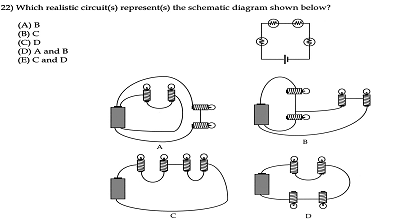Asia-Pacific Forum on Science Learning and Teaching, Volume 16, Issue 2, Article 6 (Dec., 2015) |
In this study, he results show that FINT and FI students are more successful than FD students with respect to their conceptual understandings about direct current circuits. Similarly, it is found that achiever, curious and conscientious motivated students are more successful thansocial oriented students. Similar findings were asserted by Karaçam (2005), Johnstone and Al-Naeme (1995), Zarotiadou and Tsaparlis (2000) and Sarantopoulos and Tsaparlis (2004).
There are two main variables that lead to these variations in conceptual understandings of groups with different cognitive styles and motivational styles. One of the main variables is structures and requirements of questions in DIRECT and the other is students’ individual differences/abilities (Sencer and Eryılmaz, 2004; Karaçam, 2005). The interaction between these variables affects student’s problem solving process. Students might perform if question’s structure and requirement are recognized and supported by their abilities (Bennett, 1993). DIRECT consists of multiple choice questions, and majority of these questions consist of figures. One of them is provided in Figure 1. Hence, DIRECT asks students to distinguish relevant clues from irrelevant and to analysis figures. Due to these requirements’ of questions in DIRECT, FI individuals who can distinguish relevant clues and can represent the parts of structure in different forms are more successful in DIRECT compared to FD individuals (Donnaruma, Cox and Beder, 1980). Similarly, since DIRECT doesn’t let students to interact each other during problem solving process, the scores of social motivated students on DIRECT are lower than other groups (Bahar, 2003b). This finding shows that multiple-choice test supports achiever, curious and conscious motivated students. Similarly, Johnstone (1997) stated that the use of worksheets and multiple choice exams to assess what has just been taught are fine for conscientious and achiever motivated students.

Figure 1. Sample Question in DIRECTLearning environment is another variable that lead to these variations. Physics curriculum was revised based on constructivism in 2007 and it has been applied on all grades by 2009 (MONE, 2007). But the results of studies suggest that traditional teaching approach is still dominant in Turkey (Kapucu & Yıldırım, 2013). According to traditional approach, students are passive learners, and teacher is active. Teachers don’t let students interact each other. Students learn individually. Hence, teacher gives clues them and then they recognize and memorize this factual knowledge. Since this learning environment does not consist of social interaction, social motivated students normally become unsuccessful in this situation (Bahar, 2003b). Related to FI/FD cognitive style, Lyons-Lawrence (1994) stated that whereas FI students prefer working individually, FD students prefer social learning environment. Thus, due to lack off social context in traditional learning environment, FD students who are best in social context become unsuccessful as social motivated students do (Goodenough, 1976). Besides of lack off social context in traditional learning environment, the subject of electricity consists of several abstract concepts like current, voltage, resistance, electric charge etc., and students have not opportunities to observe the movements of electric charges in circuits or to measure voltage and current by using concrete materials in traditional learning environments. Therefore, students generally construct visual images and learn those concepts intuitively. Since there is no concrete material or clues about concept in traditional learning, FI students are more successful than FD counterparts. Thus, FD students might recognize concepts provided materials and clues explicitly whereas FI students might recognize concepts via less explicit clues or materials (Goodenough, 1976).
Copyright (C) 2015 HKIEd APFSLT. Volume 16, Issue 2, Article 6 (Dec., 2015). All Rights Reserved.
